线程学习贴
创始人
2025-05-28 12:00:39
1. 线程相关概念
1.1 程序
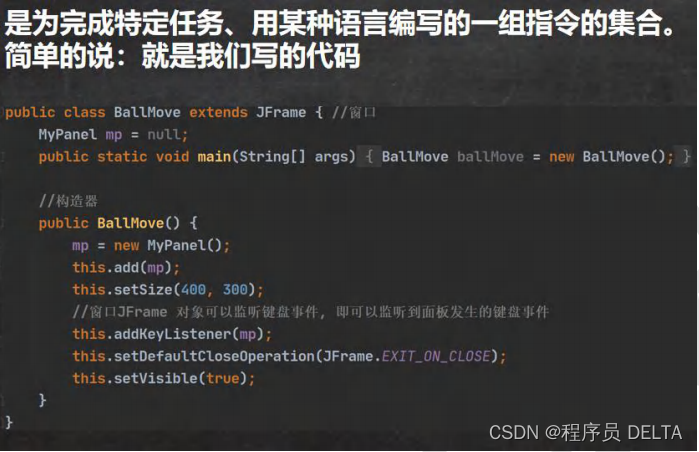
1.2 进程

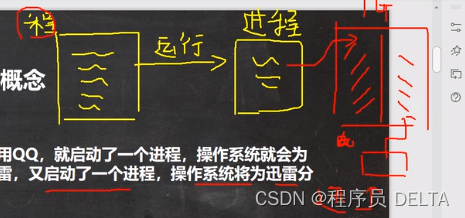
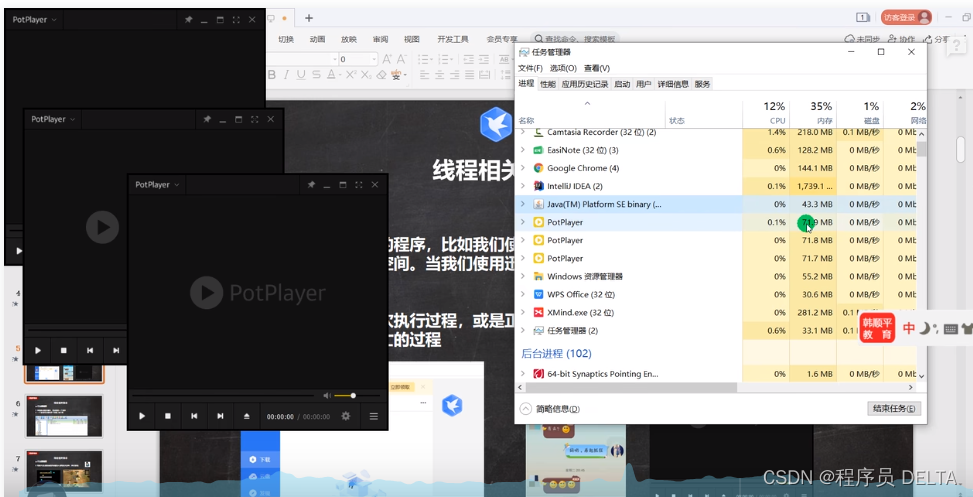
1.3 线程
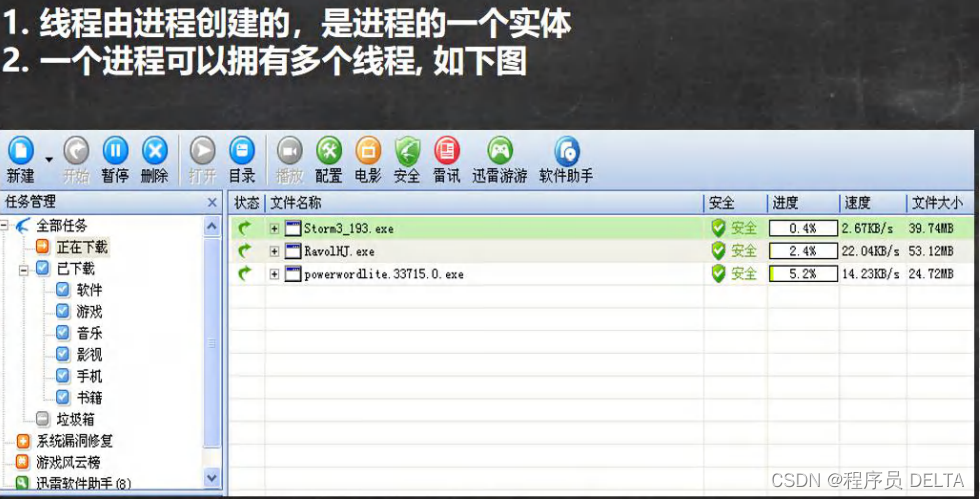
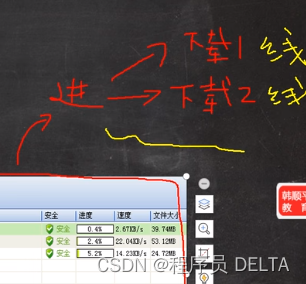
1.4 并发和并行
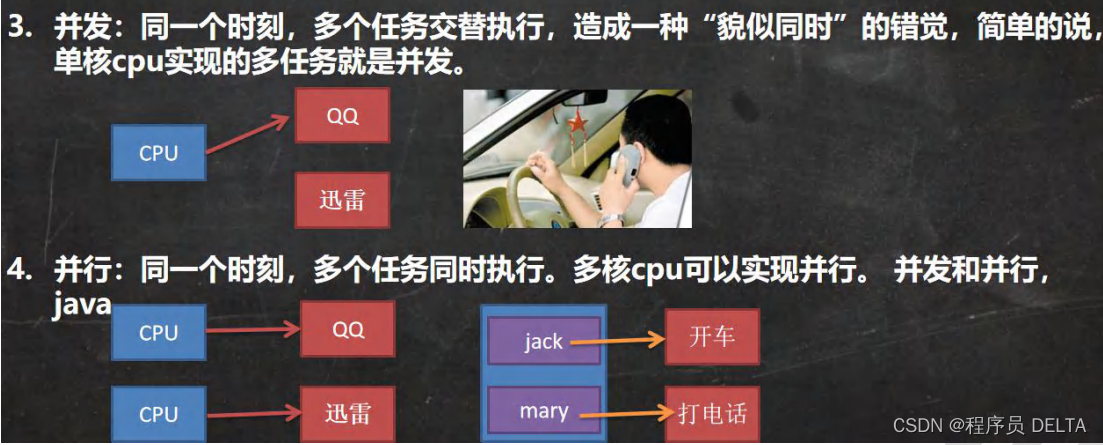
如何查看cpu的个数:资源管理器
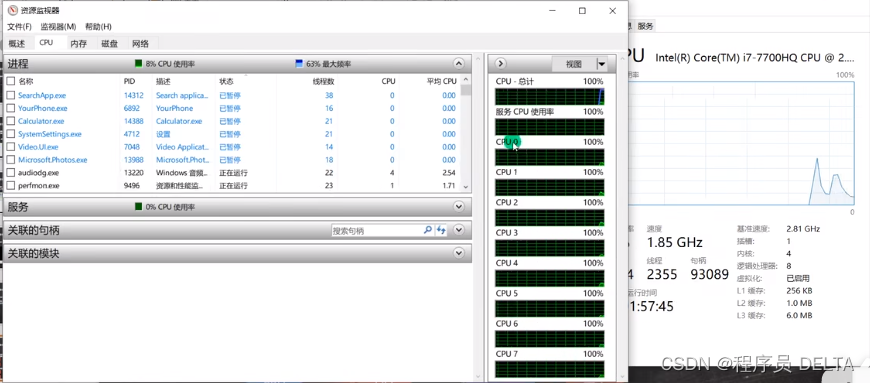
设备管理器方式
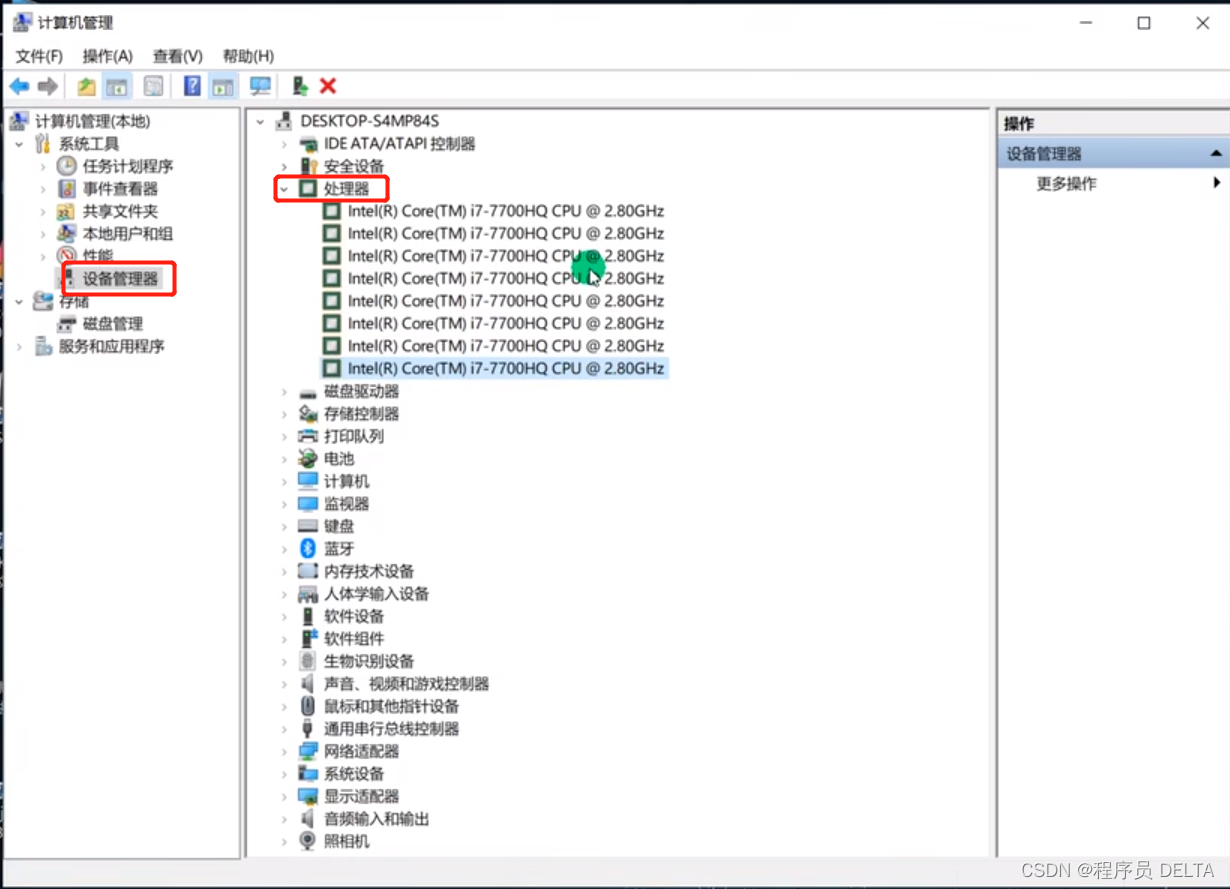
java查看处理器个数
@Test
public void testCpuNum(){Runtime runtime = Runtime.getRuntime();int i = runtime.availableProcessors();System.out.println("处理器个数为:"+i);
}
2. 线程的基本使用
2.1 创建线程的两种方式
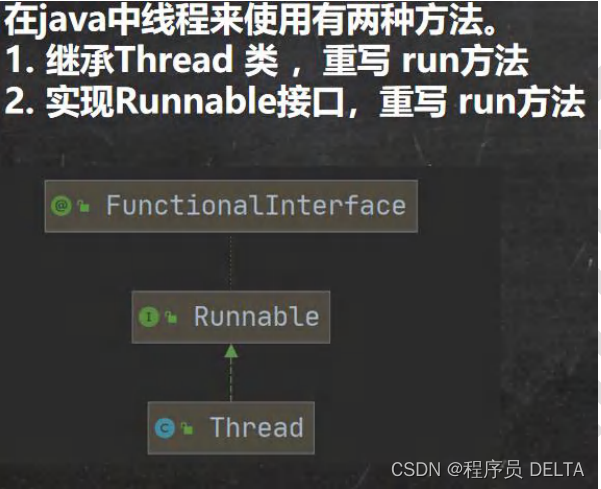
2.2 应用案例(继承Thread类)
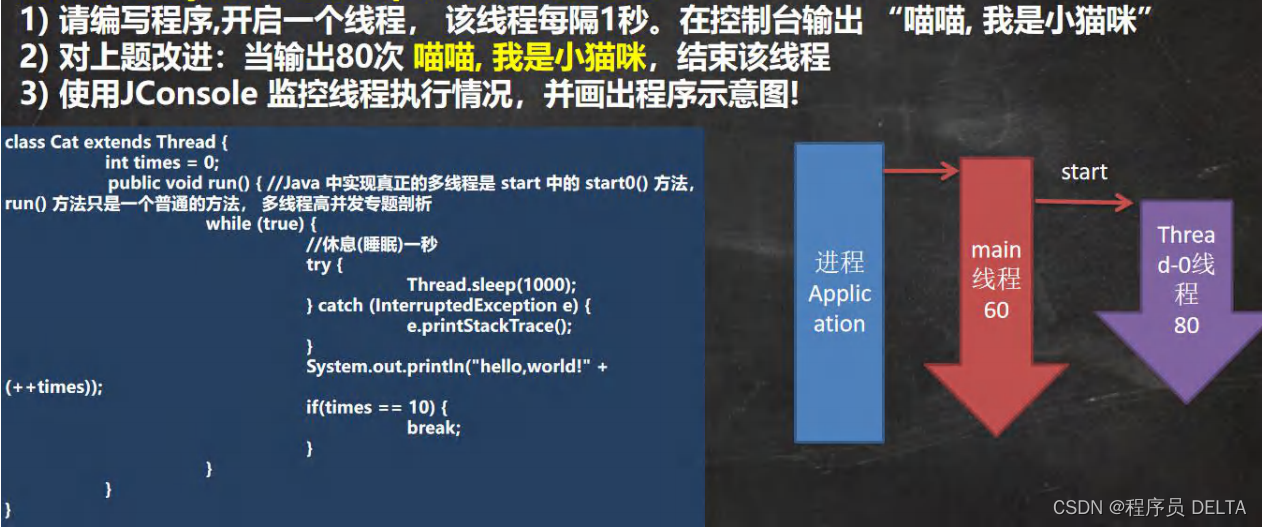
多线程图示
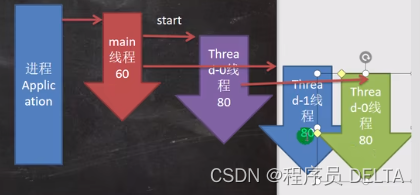
java中jconsole的使用:
控制台输入

找到对应的进程
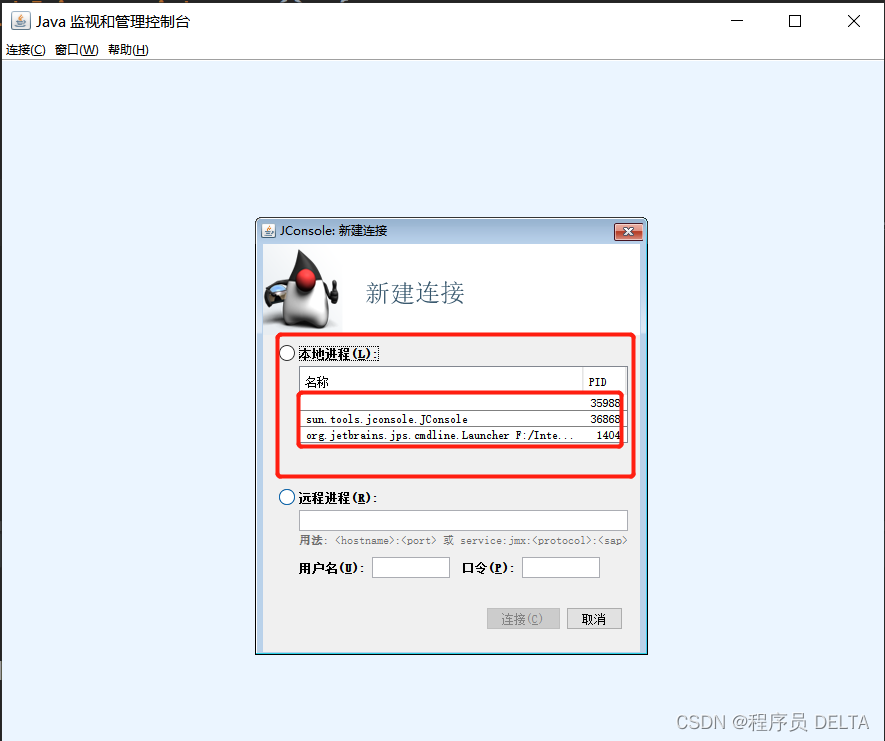
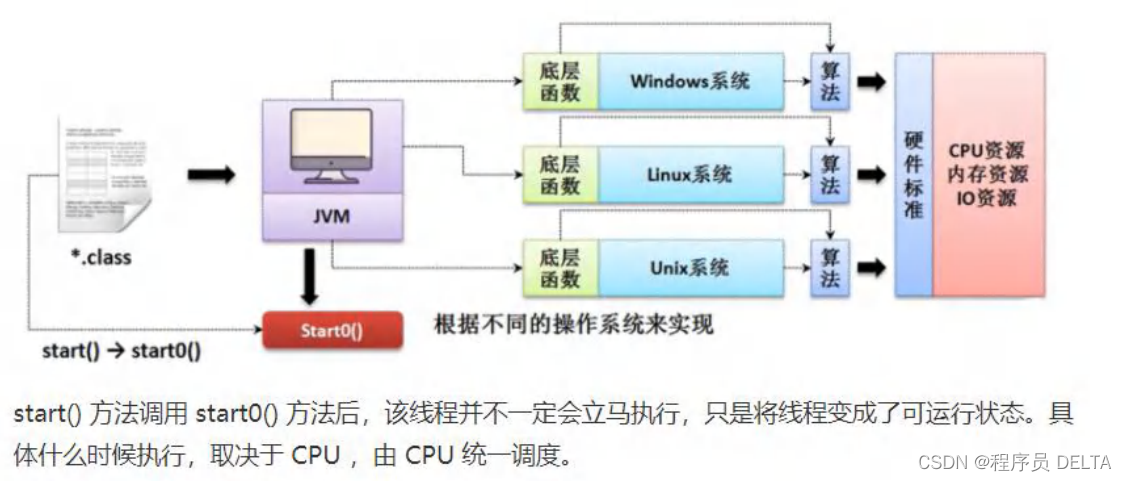
package com.hspedu.threaduse;/*** 演示通过继承Thread 类创建线程*/
public class Thread01 {public static void main(String[] args) throws InterruptedException {//创建Cat对象,可以当做线程使用Cat cat = new Cat();//读源码/*(1)public synchronized void start() {start0();}(2)//start0() 是本地方法,是JVM调用, 底层是c/c++实现//真正实现多线程的效果, 是start0(), 而不是 runprivate native void start0();*/cat.start();//启动线程-> 最终会执行cat的run方法//cat.run();//run方法就是一个普通的方法, 没有真正的启动一个线程,就会把run方法执行完毕,才向下执行//说明: 当main线程启动一个子线程 Thread-0, 主线程不会阻塞, 会继续执行//这时 主线程和子线程是交替执行..System.out.println("主线程继续执行" + Thread.currentThread().getName());//名字mainfor(int i = 0; i < 60; i++) {System.out.println("主线程 i=" + i);//让主线程休眠Thread.sleep(1000);}}
}//说明
//1. 当一个类继承了 Thread 类, 该类就可以当做线程使用
//2. 我们会重写 run方法,写上自己的业务代码
//3. run Thread 类 实现了 Runnable 接口的run方法
/*@Overridepublic void run() {if (target != null) {target.run();}}*/class Cat extends Thread {int times = 0;@Overridepublic void run() {//重写run方法,写上自己的业务逻辑while (true) {//该线程每隔1秒。在控制台输出 “喵喵, 我是小猫咪”System.out.println("喵喵, 我是小猫咪" + (++times) + " 线程名=" + Thread.currentThread().getName());//让该线程休眠1秒 ctrl+alt+ttry {Thread.sleep(1000);} catch (InterruptedException e) {e.printStackTrace();}if(times == 80) {break;//当times 到80, 退出while, 这时线程也就退出..}}}
}
1.start0() 是本地方法,是JVM调用, 底层是c/c++实现
2.真正实现多线程的效果, 是start0(), 而不是 run
private native void start0();
3.当一个类继承了 Thread 类, 该类就可以当做线程使用
4.我们会重写 run方法,写上自己的业务代码
5.run Thread 类 实现了 Runnable 接口的run方法
2.3 应用案例(实现Runnable接口)

package com.hspedu.threaduse;/**
* @version 1.0
* 通过实现接口Runnable 来开发线程
*/
public class Thread02 {public static void main(String[] args) {Dog dog = new Dog();//dog.start(); 这里不能调用start//创建了Thread对象,把 dog对象(实现Runnable),放入ThreadThread thread = new Thread(dog);thread.start();// Tiger tiger = new Tiger();//实现了 Runnable
// ThreadProxy threadProxy = new ThreadProxy(tiger);
// threadProxy.start();}
}class Animal {
}class Tiger extends Animal implements Runnable {@Overridepublic void run() {System.out.println("老虎嗷嗷叫....");}
}//线程代理类 , 模拟了一个极简的Thread类
class ThreadProxy implements Runnable {//你可以把Proxy类当做 ThreadProxyprivate Runnable target = null;//属性,类型是 Runnable@Overridepublic void run() {if (target != null) {target.run();//动态绑定(运行类型Tiger)}}public ThreadProxy(Runnable target) {this.target = target;}public void start() {start0();//这个方法时真正实现多线程方法}public void start0() {run();}
}class Dog implements Runnable { //通过实现Runnable接口,开发线程int count = 0;@Overridepublic void run() { //普通方法while (true) {System.out.println("小狗汪汪叫..hi" + (++count) + Thread.currentThread().getName());//休眠1秒try {Thread.sleep(1000);} catch (InterruptedException e) {e.printStackTrace();}if (count == 10) {break;}}}
}
代理模式,有静态代理和动态代理
通过Thread含参构造实现的线程创建底层实际运用了代理模式
2.4 线程使用案例(多线程执行)

/*** main线程启动两个子线程*/
public class Thread03 {public static void main(String[] args) {T1 t1 = new T1();T2 t2 = new T2();Thread thread1 = new Thread(t1);Thread thread2 = new Thread(t2);thread1.start();//启动第1个线程thread2.start();//启动第2个线程//...}
}class T1 implements Runnable {int count = 0;@Overridepublic void run() {while (true) {//每隔1秒输出 “hello,world”,输出10次System.out.println("hello,world " + (++count));try {Thread.sleep(1000);} catch (InterruptedException e) {e.printStackTrace();}if(count == 60) {break;}}}
}class T2 implements Runnable {int count = 0;@Overridepublic void run() {//每隔1秒输出 “hi”,输出5次while (true) {System.out.println("hi " + (++count));try {Thread.sleep(1000);} catch (InterruptedException e) {e.printStackTrace();}if(count == 50) {break;}}}
}
2.5 线程的理解
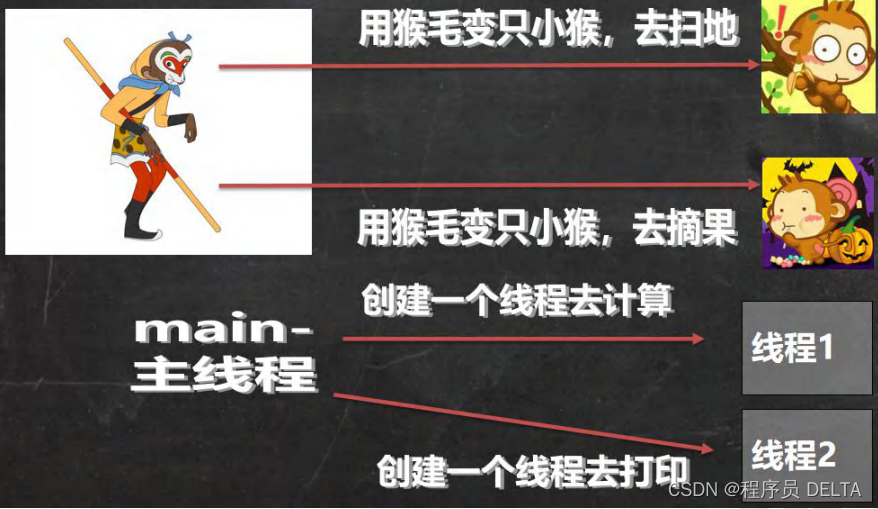
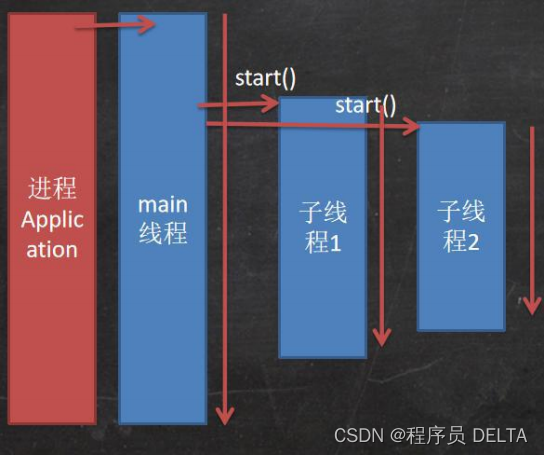
自我思考:
多线程是什么,为什么要使用多线程,有什么好处
首先多线程可以理解为:假设一个程序有多个功能,如果只有一个主线程(一个人)执行,那么从头到尾都是一个线程(人)在干活,现在有了多线程,我可以将一个程序交给不同的线程(人)去完成对应的功能,比如A线程负责下载,B线程负责上传,这个操作是可以同时进行的,大大提升了程序的效率
2.6 继承 Thread vs 实现 Runnable 的区别
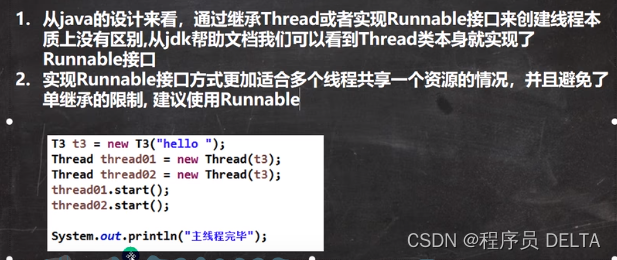
3. 线程安全问题
3.1 售票案例

package com.hspedu.ticket;/*** 使用多线程,模拟三个窗口同时售票100张*/
public class SellTicket {public static void main(String[] args) {//测试
// SellTicket01 sellTicket01 = new SellTicket01();
// SellTicket01 sellTicket02 = new SellTicket01();
// SellTicket01 sellTicket03 = new SellTicket01();
//
// //这里我们会出现超卖..
// sellTicket01.start();//启动售票线程
// sellTicket02.start();//启动售票线程
// sellTicket03.start();//启动售票线程System.out.println("===使用实现接口方式来售票=====");SellTicket02 sellTicket02 = new SellTicket02();new Thread(sellTicket02).start();//第1个线程-窗口new Thread(sellTicket02).start();//第2个线程-窗口new Thread(sellTicket02).start();//第3个线程-窗口}
}//使用Thread方式
class SellTicket01 extends Thread {private static int ticketNum = 100;//让多个线程共享 ticketNum@Overridepublic void run() {while (true) {if (ticketNum <= 0) {System.out.println("售票结束...");break;}//休眠50毫秒, 模拟try {Thread.sleep(50);} catch (InterruptedException e) {e.printStackTrace();}System.out.println("窗口 " + Thread.currentThread().getName() + " 售出一张票"+ " 剩余票数=" + (--ticketNum));}}
}//实现接口方式
class SellTicket02 implements Runnable {private int ticketNum = 100;//让多个线程共享 ticketNum@Overridepublic void run() {while (true) {if (ticketNum <= 0) {System.out.println("售票结束...");break;}//休眠50毫秒, 模拟try {Thread.sleep(50);} catch (InterruptedException e) {e.printStackTrace();}System.out.println("窗口 " + Thread.currentThread().getName() + " 售出一张票"+ " 剩余票数=" + (--ticketNum));//1 - 0 - -1 - -2}}
}
相关内容
热门资讯
春风一拂千山绿 春风轻拂千山绿...
新春对联欣赏1、天意无常顺子自然,万般皆苦唯有自渡。2、门迎百福吉星照,户纳千祥鸿运开。3、一门天赐...
北京的名胜古迹 北京最著名的景...
北京从元代开始,逐渐走上帝国首都的道路,先是成为大辽朝五大首都之一的南京城,随着金灭辽,金代从海陵王...
长白山自助游攻略 吉林长白山游...
昨天介绍了西坡的景点详细请看链接:一个人的旅行,据说能看到长白山天池全凭运气,您的运气如何?今日介绍...
阿西吧是什么意思 阿西吧相当于...
即使你没有受到过任何外语培训,你也懂四国语言。汉语:你好英语:Shit韩语:阿西吧(아,씨발! )日...
猫咪吃了塑料袋怎么办 猫咪误食...
你知道吗?塑料袋放久了会长猫哦!要说猫咪对塑料袋的喜爱程度完完全全可以媲美纸箱家里只要一有塑料袋的响...
